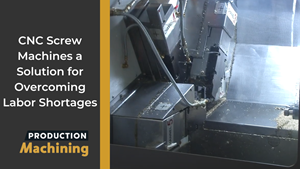An Employer's Back to School List
I remember the excitement of back to school when I was a child—new clothes, new shoes, maybe a new notebook and new school supplies.
I remember the excitement of back to school when I was a child—new clothes, new shoes, maybe a new notebook and new school supplies. These items embodied my parents’ wishes for us to succeed academically and earn a better place in the world. Blue-collar budgets meant money was tight, and a well thought out list assured that my parents did the best for the family with the resources they had.
It is back to school time again and, while my children have long since left the nest, I have been thinking about what we, as employers, would put on this year’s back to school list for our shops and for our industry.
People that want to work. At a recent meeting in Chicago, I met a VP of operations from a major soft drink company. What is number one on his list? “People that want to work,” he told me. Really. “I am looking for people looking for a job, not those just looking for a paycheck,” he said. “I’m looking for solid people who can make a difference as they make a career.”
His company offers internships and a company development program. But his first task every week is to review his vacancies report. Add “people that want to work” to your back to school list.
Looking for talent, not labor. Productivity in the United States is high, and one consequence is that we need talented people, not just bodies in the “labor gang.” U.S. productivity doubled from 2008 to 2009; then it doubled again in 2010, according to the Organisation for Economic Cooperation and Development. The jobs that were cut in 2008 and 2009 tended to be the least skilled positions at any company, according to most press reports.
Now, companies seem to have hit the limit for what they can produce with the talent they have. To make more sales, they need to add talent, not just bodies. Add “talented people” to your list.
Urgent need for craft workers. Much of the value-add in our industry comes from the programming, set-up and operation of high-tech, multiple-axis, CNC machines. This is not “just push the big green button” work.
An inefficient program can cost a company dollars per part if the program runs too slow. Setting up the machine in a time longer than planned results in higher costs and lost profits.
Operators have to be on top of their game to assure that all features are produced to spec and that tools are replaced before they create problems. The craftsmen (and craftswomen) in our precision machining industry add value by what they know and how they do.
Employees in the precision machining industry are getting closer to retirement. Median age (half the workforce is older, half is younger) was reported to be 51 for occupations in our industry, according to the Bureau of Labor Statistics.
Mark Doms, chief economist for the U.S. Department of Commerce, says there is a “longer-term trend of an increase in the average age of those employed in the manufacturing industry. Those aged 45 years or older now comprise almost half of manufacturing employment, up from about one-third in the mid to late 1990s.”
With 10,000 baby boomers turning 65 each day, our industry—every industry—needs a plan to retain the knowledge and capture the skills of our departing workers.
Willing to train. My parents bought me my school supplies knowing that I would take them to school. Given the need to replace our retiring, highly productive craft workers, what has changed for employers is that we are going to have to step up our investment in training, cross-training and setting up programs for knowledge retention and the capturing of “tribal knowledge.”
Unlike my parents, who bought me school supplies, packed my lunch and sent me off to school, employers today need to take charge of the training and development of the people who add value in our shops.
We can no longer take for granted that a surplus of craft machinists is out there somewhere just waiting for our offer. We need to actively manage for today’s reality: high-productivity, high technology workplaces require skilled, talented, trained employees. We can’t just take what the schools give us. We need to tell the schools what we are looking for in our hires. Add “willing to train” to your list.
Eliminate the skills gap. The policy wonks in Washington, D.C., many state capitals and on our TV news programs can debate the finer points of whether or not the United States has a skills gap or a skills mismatch.
Employers I have spoken with in the precision machining industry have told me if they didn’t have an opening, they would create one for the right candidate, if the candidate applied at their shop.
That fact alone tells me the debate is irrelevant. U.S. advanced manufacturing companies must have a talented, trained cadre of capable workers in industry specialties such as CNC programming, setup and operation. They must have those skilled workers if we are to remain competitive and sustain manufacturing as a competitive strength here in North America.
Like my folks who wanted to see their kids earn a better place in the world, our companies should be leaders in helping to improve the visibility, value and prestige of the advanced manufacturing people who make a difference in our shops. By applying the talent, skills and efforts of those workers, cars are safer, food and beverages are delivered hygienically, and aircraft and medical devices can be relied upon.
As employers, we have a list of what we need. Our job now is to turn that list into a list of actions to make a difference. The first item on that list should be “to increase the visibility, value and prestige of precision machinists, programmers, engineers and our other high-value team members.”
If we take this first step, we will make it possible to find people who want to work, people with talent and people able to be trained for our craft. That way, we can eliminate the skills gap and keep our shops as competitive and sustainable centers of advanced manufacturing and productive, value-adding activity.
The longest journey starts with a single step. Let’s take that first step to let the world’s most talented workers know just how good the careers are that await them in precision machining. We can—we must—sustain the competitiveness of our shops and industry through our back-to-school investment.
— Precision Machined Products Association
Related Content
New Thinking from the New Generation for the New Year
“We have to learn to think in a new way.” –Albert Einstein
Read MoreGift a 3D Printer to an Employee?
Some shops have purchased inexpensive polymer 3D printers for their operations. Does it make sense to take this a step further and give (or loan) a sharp young employee one to experiment with at home? This small investment could pay off for your shop in different ways.
Read MoreApplying a Healthy Approach to Employee Investment
Service Center Metals’ on-site health center offers its employees and their families free same-day health care and, in return, the employer is gaining many benefits including a healthier workforce and attracting potential employees.
Read MoreVideo Tech Brief: CNC Screw Machines a Solution for Overcoming Labor Shortages
CNC screw machines can exceed job shop productivity and enable manufacturers to overcome perpetual employment gaps.
Read MoreRead Next
Do You Have Single Points of Failure?
Plans need to be in place before a catastrophic event occurs.
Read More5 Aspects of PMTS I Appreciate
The three-day edition of the 2025 Precision Machining Technology Show kicks off at the start of April. I’ll be there, and here are some reasons why.
Read MoreA Tooling Workshop Worth a Visit
Marubeni Citizen-Cincom’s tooling and accessory workshop offers a chance to learn more about ancillary devices that can boost machining efficiency and capability.
Read More





















